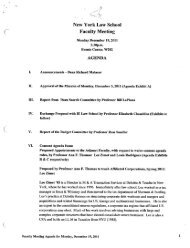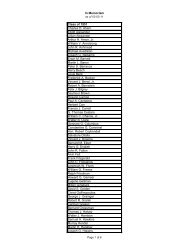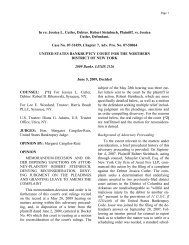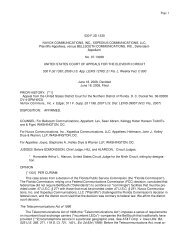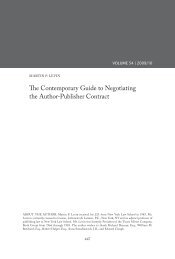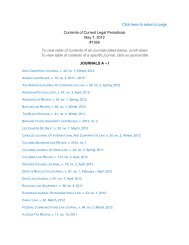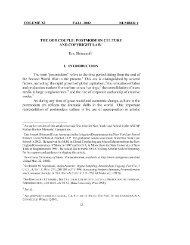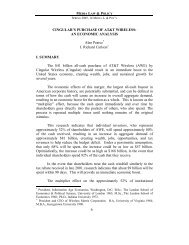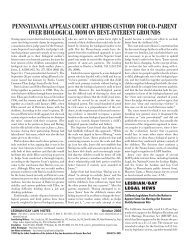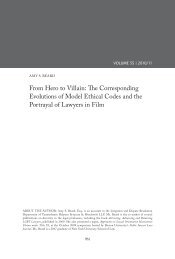The New Age of Scarlet-Letter Punishment - New York Law School
The New Age of Scarlet-Letter Punishment - New York Law School
The New Age of Scarlet-Letter Punishment - New York Law School
Create successful ePaper yourself
Turn your PDF publications into a flip-book with our unique Google optimized e-Paper software.
Sabrina Antebi 5<br />
JAC Capstone<br />
diversification. 34 Citizens became more mobile and began migrating to large cities defined by<br />
autonomy and individuality. 35 <strong>The</strong> breakdown in the sense <strong>of</strong> community weakened the<br />
sensation <strong>of</strong> suffering that had accompanied public spectacles <strong>of</strong> shaming. 36<br />
<strong>The</strong> prison system was born as a result <strong>of</strong> increasing crime rates and the failure <strong>of</strong><br />
traditional punishments. 37 By the 1850’s, confinement had emerged as the new form <strong>of</strong><br />
punishment and social control <strong>of</strong> criminal behavior. 38<br />
Why Use Shame?<br />
<strong>The</strong> return to shaming penalties is to some extent a nostalgic longing for an era when a<br />
community and its principles were so uniform that people could police themselves. 39 <strong>The</strong><br />
primary reason for imposing these sanctions is economic. In 2006, there were approximately<br />
2.26 million people in state and federal prisons. 40 Prisons are costly and overused. 41 Today, the<br />
costs <strong>of</strong> imprisonment consume large shares <strong>of</strong> state budgets. 42<br />
Another reason used by supporters <strong>of</strong> these punishments is that imprisonment is<br />
sometimes too harsh <strong>of</strong> a punishment, and the other major alternative, probation, is too lenient. 43<br />
Judges tend not to use fines and community service all that much because they are “expressively<br />
34 HIRSCH, supra note 27, at 35; Meskell, supra note 33, at 842.<br />
35 Book, supra note 3, at 660.<br />
36 Deni Smith Garcia, Three Worlds Collide: A Novel Approach to the <strong>Law</strong>, Literature, and<br />
Psychology <strong>of</strong> Shame, 6 TEX. WESLEYAN L. REV. 105, 113 (1999).<br />
37 HIRSCH, supra note 27, at 39.<br />
38 Sanders, supra note 16, at 366.<br />
39 Jan H<strong>of</strong>fman, Crime and <strong>Punishment</strong>: Shame Gains Popularity, N.Y. TIMES, January 16,<br />
1997, at A1.<br />
40 U.S. Department <strong>of</strong> Justice, Bureau <strong>of</strong> Justice Statistics,<br />
http://www.ojp.usdoj.gov/bjs/prisons.htm (last visited April 21, 2008).<br />
41 Garvey, supra note 2, at 738.<br />
42 See id.<br />
43 Id. at 744.



